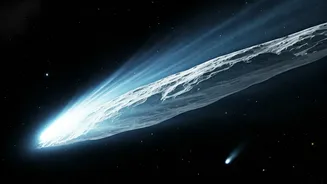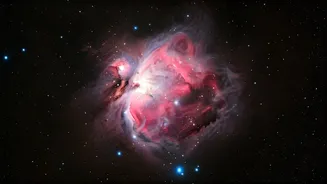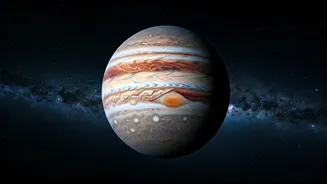Enceladus: A Closer Look
Enceladus, one of Saturn's many moons, has drawn considerable attention from scientists due to its intriguing characteristics. The moon is covered in a thick
layer of ice, hiding an ocean beneath its surface. This subsurface ocean is considered a promising place to search for life because it contains water and various organic molecules, which are essential for life. The moon's geysers, which eject water vapor and icy particles into space, provide scientists with easily accessible samples to study. Analysing these samples helps to understand the moon's composition and the potential for life-supporting environments within it. Scientists are using advanced instruments to explore the chemical composition of these plumes, looking for evidence of the building blocks of life. These studies are crucial in the quest to unravel the secrets of the universe and understand the potential for life beyond Earth.
The Role of Cosmic Rays
The recent study highlights the role of cosmic rays in the formation of organic molecules on Enceladus. Cosmic rays are high-energy particles that originate from sources outside our solar system, such as supernovae and other energetic events. When these rays collide with the ice on Enceladus, they release substantial energy, leading to chemical reactions. Scientists have proposed that these reactions convert simple molecules, like water and carbon dioxide, into more complex organic compounds. The findings suggest that cosmic rays are a significant driver of chemical processes on Enceladus, potentially forming the building blocks of life in the icy environment. The researchers' work underscores the idea that cosmic rays could play a similar role in creating organic molecules on other icy moons and celestial bodies across the universe. These insights could expand our understanding of how life might originate in a variety of extreme environments.
Formation of Organic Molecules
The formation of organic molecules by cosmic rays is a complex process. When cosmic rays hit ice, they initiate reactions that break down water molecules (H2O) and other molecules. This process creates highly reactive atoms and free radicals. These radicals then react with other available compounds, eventually forming complex organic molecules. The type of organic molecules formed depends on the initial composition of the ice and the energy of the cosmic rays. Different organic molecules, such as methane, ethane, and even more complex compounds, might be produced. Scientists use laboratory experiments and computer simulations to understand these reactions and determine which types of organic molecules can be created under conditions similar to those found on Enceladus. This is essential to create a comprehensive understanding of the chemical pathways that could give rise to the organic compounds found in the moon's plumes.
Implications for Astrobiology
The discovery has significant implications for astrobiology, the study of life in the universe. It suggests that environments similar to Enceladus might be more conducive to the formation of organic molecules than previously thought. This expands the possibilities for where life might exist beyond Earth. The presence of organic molecules is a key indicator of potential habitability. Even though the molecules themselves do not prove the existence of life, they are essential for the formation of living organisms. These findings encourage scientists to focus their search on icy moons and other celestial bodies. Further research will involve analysing data from the James Webb Space Telescope and future missions to determine the composition of the plumes and search for direct evidence of life, such as biosignatures. This research increases the possibility of life in our solar system and beyond.
Future Research Directions
Several avenues exist for future research in this field. Scientists plan to conduct further laboratory experiments to simulate the effects of cosmic rays on various ices that mirror the conditions on Enceladus. These experiments will enable scientists to study the specific organic molecules produced and to understand the mechanisms of their formation. In addition, the next step involves detailed analyses of data from missions like the James Webb Space Telescope and future missions to Saturn. These probes will help in gathering more information about the plume composition and characteristics of the icy moon. Understanding the environmental conditions on the moon is crucial in determining the potential for life. This research might lead to the development of new instruments and technologies to enhance the search for life in our solar system and beyond. These endeavours will further our understanding of the origins of life and our place in the universe.














